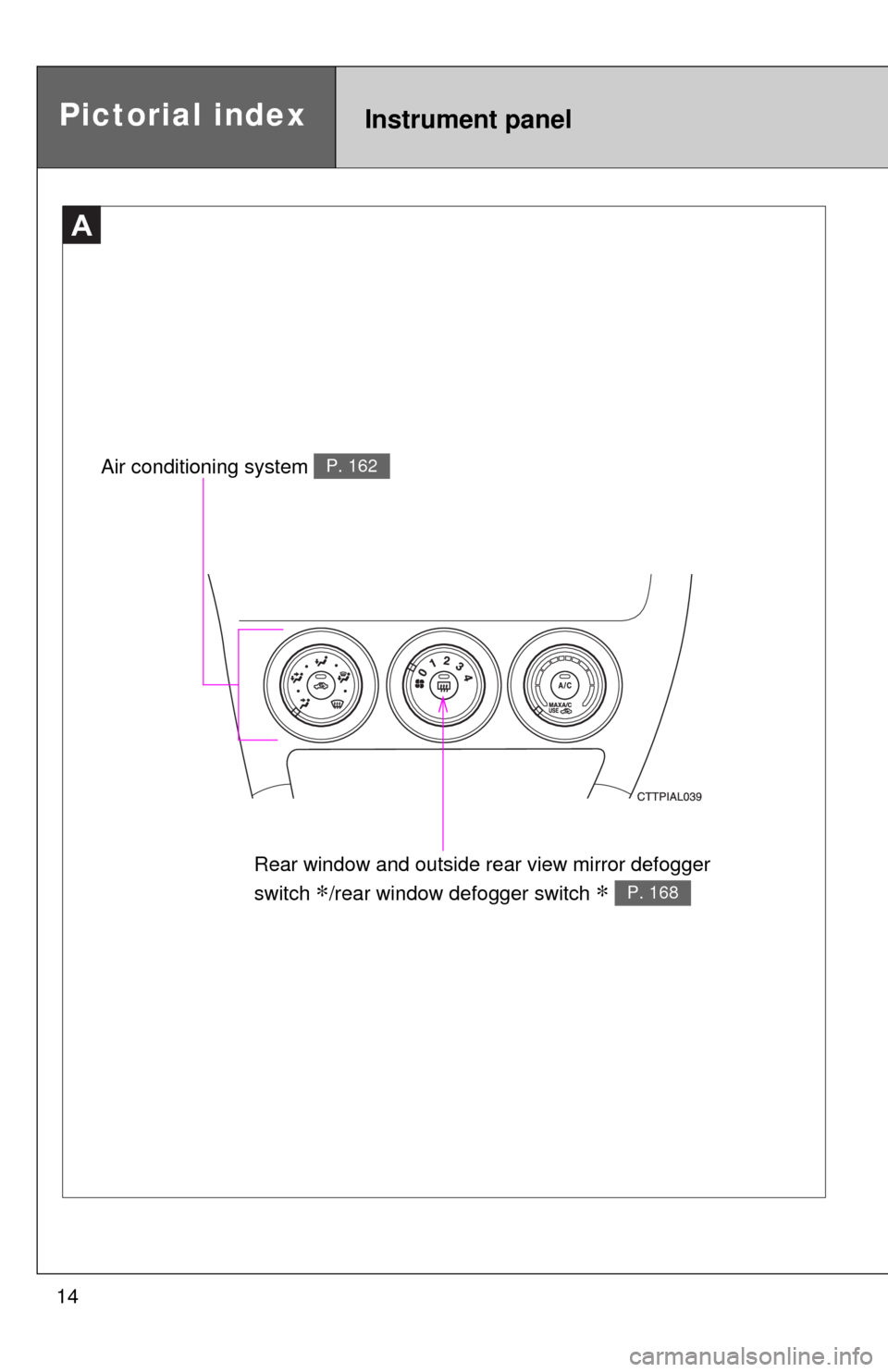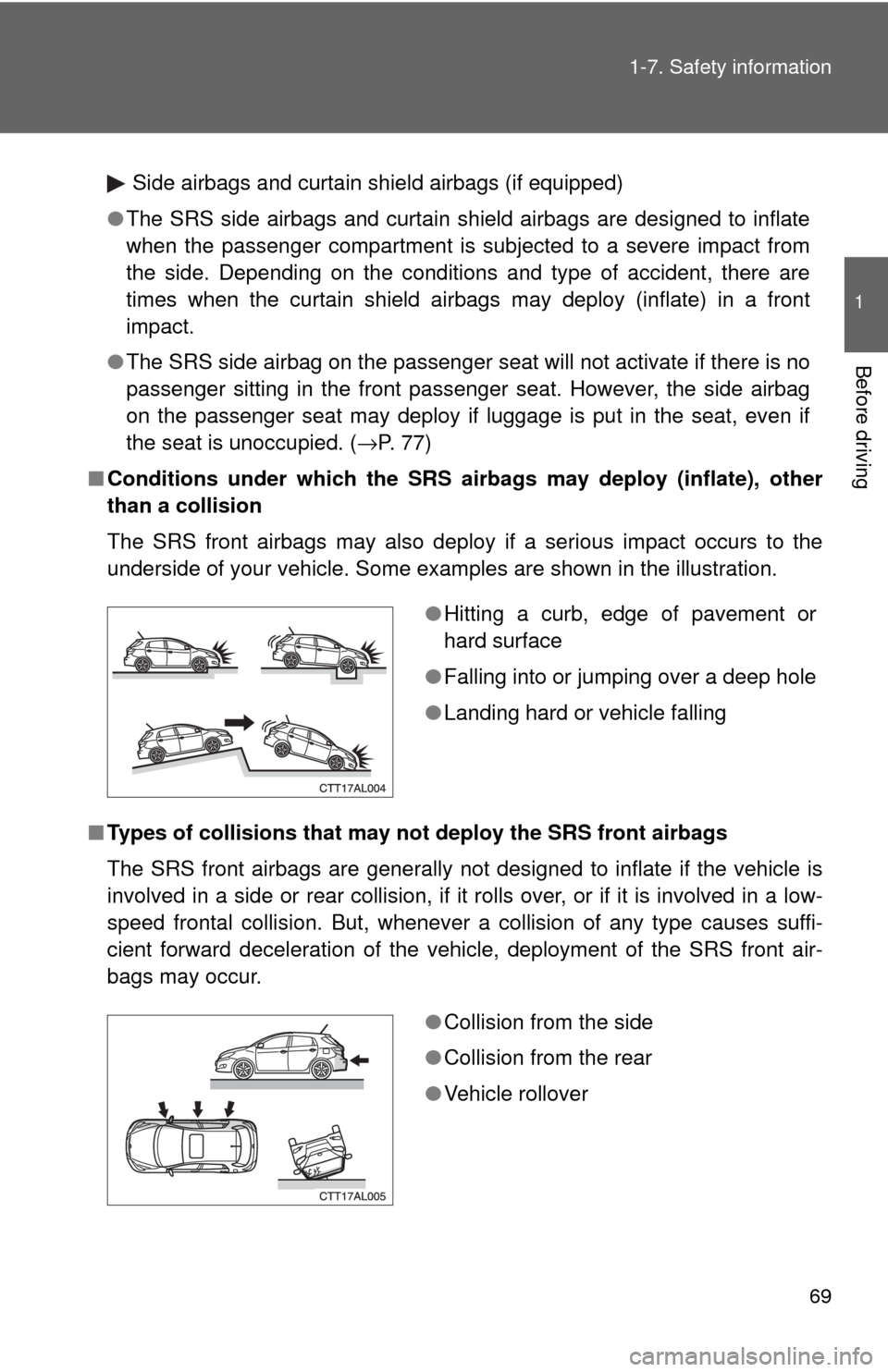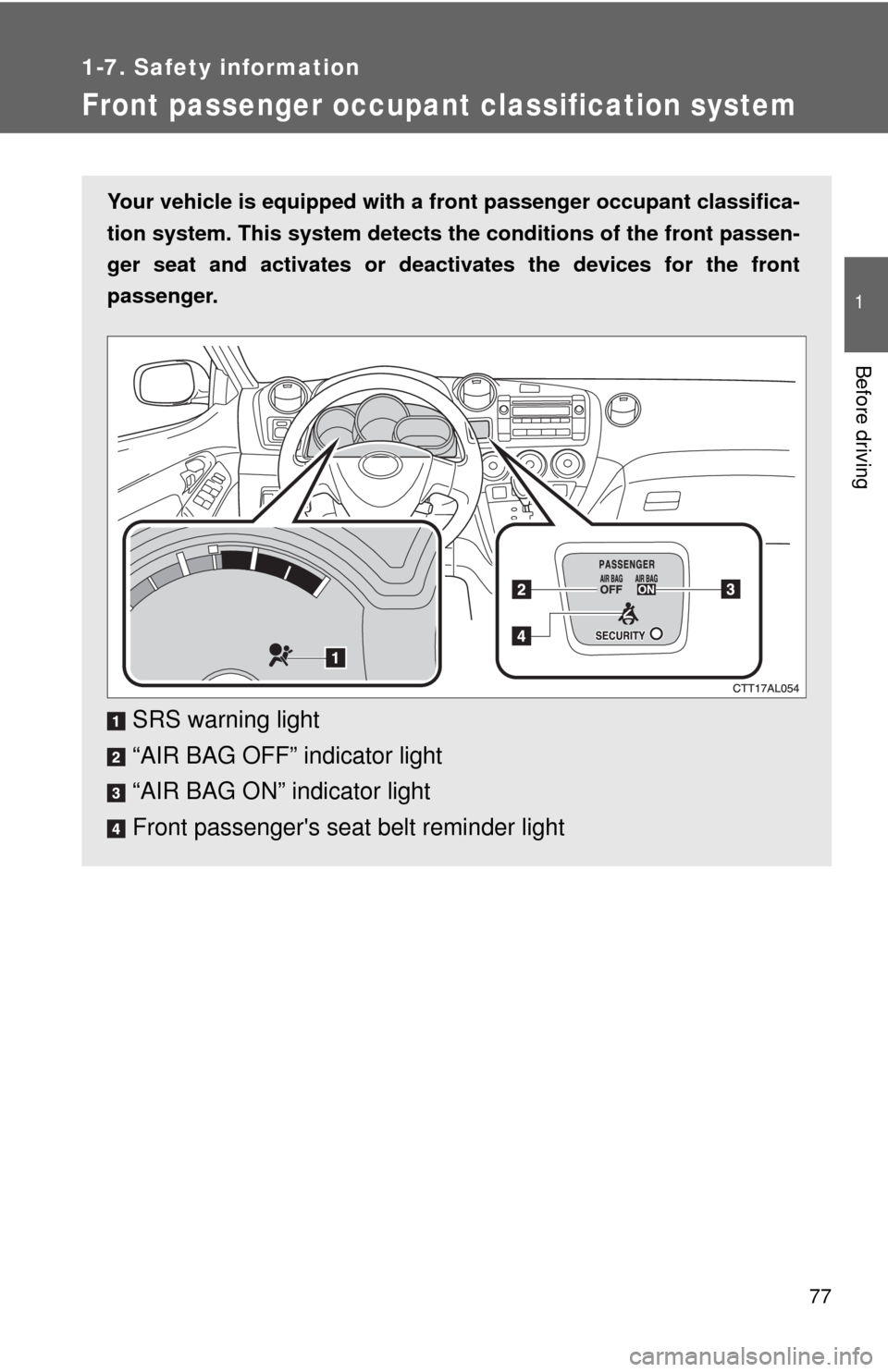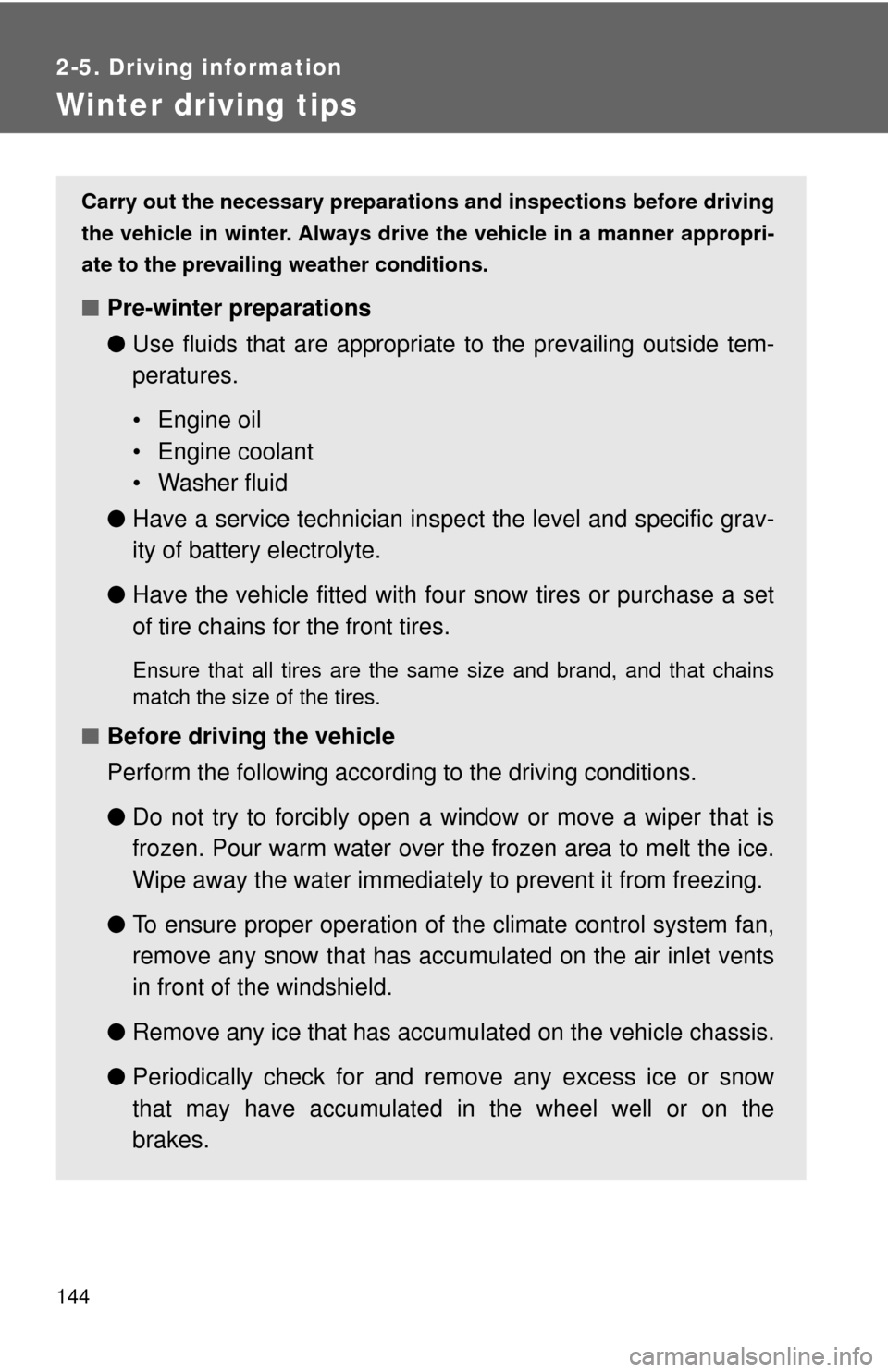air condition TOYOTA MATRIX 2009 E140 / 2.G Owners Manual
[x] Cancel search | Manufacturer: TOYOTA, Model Year: 2009, Model line: MATRIX, Model: TOYOTA MATRIX 2009 E140 / 2.GPages: 440, PDF Size: 9.39 MB
Page 1 of 440

TABLE OF CONTENTS
1
1Before drivingAdjusting and operating features such as door locks,
mirrors, and steering column.
2When drivingDriving, stopping and safe-driving information.
3Interior fea-
turesAir conditioning and audio systems, as well as other in-
terior features for a comfortable driving experience.
4Maintenance
and careCleaning and protecting your vehicle, performing do-it-
yourself maintenance, and maintenance information.
5When trouble
arisesWhat to do if the vehicle needs to be towed, gets a flat
tire, or is involved in an accident.
6Vehicle
specificationsDetailed vehicle information.
7For ownersReporting safety defects for U.S. owners and seat belt
instructions for Canadian owners
IndexAlphabetical listing of information contained in this
manual.
Page 3 of 440

1
2
3
4
5
6
7
3
2-5. Driving information ........... 140
Cargo and luggage ............. 140
Vehicle load limits ............... 143
Winter driving tips ............... 144
Trailer towing ...................... 148
Dinghy towing
(automatic
transmission) .................... 156
Dinghy towing
(manual transmission) ...... 157
3-1. Using the air conditioning
system and defogger...... 162
Air conditioning system ....... 162
Rear window and outside
rear view mirror
defoggers .......................... 168
3-2. Using the audio system.... 169
Audio system types ............. 169
Using the radio .................... 172
Using the CD player ............ 178
Playing MP3 and
WMA discs ........................ 185
Optimal use of the audio
system .............................. 193
Using the AUX adapter ....... 196
Using the steering wheel
audio switches .................. 197
3-3. Using the hands-free
phone system
(for cellular phone) ......... 200Hands-free phone system
(for cellular phone)
features ............................ 200
Using the hands-free
phone system
(for cellular phone) ........... 203
Making a phone call ........... 212
Setting a cellular phone ...... 216
Security and system
setup ................................ 221
Using the phone book ........ 225
3-4. Using the interior lights ... 232
Interior lights list ................. 232
• Interior light ...................... 233
• Personal/interior lights...... 234
• Personal lights.................. 235
3-5. Using the storage
features ........................... 236
List of storage features ....... 236
• Glove box ......................... 237
• Console box ..................... 237
• Cup holders ...................... 239
• Bottle holders ................... 241
• Auxiliary boxes ................. 242
3-6. Other interior features ..... 244
Sun visors........................... 244
Vanity mirrors ..................... 245
Clock .................................. 246
Ashtrays ............................. 247
Cigarette lighter .................. 248
Power outlet ....................... 249
Grocery bag hook ............... 251
Seatback table.................... 253
Floor mat ............................ 254
Luggage compartment
feature .............................. 255
3Interior features
Page 4 of 440

TABLE OF CONTENTSIndex
4
Compass ............................ 262
4-1. Maintenance and care...... 268
Cleaning and protecting the
vehicle exterior ................. 268
Cleaning and protecting the
vehicle interior .................. 270
4-2. Maintenance ..................... 273
Maintenance
requirements .................... 273
General maintenance ......... 275
Emission inspection and
maintenance (I/M)
programs .......................... 278
4-3. Do-it-yourself
maintenance ................... 279
Do-it-yourself service
precautions ...................... 279
Hood................................... 283
Positioning a floor jack ....... 285
Engine compartment .......... 288
Tires ................................... 303
Tire inflation pressure......... 312
Wheels ............................... 316
Air conditioning filter ........... 318
Key battery (vehicles with
wireless remote control) ... 320
Checking and replacing
fuses ................................ 323
Light bulbs .......................... 3325-1. Essential information ....... 342
If your vehicle needs to
be towed ........................... 342
If you think something
is wrong ............................ 348
Fuel pump shut off
system .............................. 349
Event data recorder ............ 350
5-2. Steps to take in an
emergency ...................... 352
If a warning light turns on
or a warning buzzer
sounds... .......................... 352
If you have a flat tire ........... 362
If the engine will not start .... 376
If the shift lever cannot be
shifted from P (automatic
transmission) .................... 377
If you lose your keys ........... 378
If the battery is
discharged ........................ 379
If your vehicle overheats..... 385
If the vehicle becomes
stuck ................................. 388
4Maintenance and care
5When trouble arises
Page 14 of 440

14
A
Rear window and outside rear view mirror defogger
switch
∗/rear window defogger switch ∗ P. 168
Air conditioning system P. 162
Pictorial indexInstrument panel
Page 27 of 440

27 1-2. Opening, closing and locking the doors
1
Before driving
■Key battery depletion
If the wireless remote control function does not operate, the battery may be
depleted. Replace the battery when necessary. (→P. 320)
■Security feature
If a door is not opened within approximately 60 seconds after the vehicle is
unlocked, the security feature automatically locks the vehicle again.
■Conditions affecting operation
The wireless remote control function may not operate normally in the follow-
ing situations.
●Near a TV tower, radio station, electric power plant, airport or other facil-
ity that generates strong radio waves
●When carrying a portable radio, cellular phone or other wireless commu-
nication devices
●When multiple wireless keys are in the vicinity
●When the wireless key has come into contact with, or is covered by, a
metallic object
●When a wireless key (that emits radio waves) is being used nearby
●When the wireless key has been left near an electrical appliance such as
a personal computer
●When the wireless key battery is depleted
●If window tint with a metallic content or metallic objects are attached to
the rear window
■Customization that can be configured at Toyota dealer
Settings (e.g. operation signal) can be changed. (Customizable features →P.
420)
Page 68 of 440

68 1-7. Safety information
■SRS warning light
This warning light system monitors the airbag sensor assembly, front airbag
sensors, side and curtain shield airbag sensors (if equipped), curtain shield
airbag sensors (if equipped), driver's seat position sensor, driver's seat belt
buckle switch, front passenger occupant classification system, “AIR BAG
ON” indicator light, “AIR BAG OFF” indicator light, front passenger's seat
belt buckle switch, seat belt pretensioner assemblies, inflators, interconnect-
ing wiring and power sources. (→P. 353)
■If the SRS airbags deploy (inflate)
●Bruising and slight abrasions may result from contact with a deploying
(inflating) SRS airbag.
●A loud noise and white powder will be emitted.
●Parts of the airbag module (steering wheel hub, airbag cover and inflator)
as well as the front seats, and parts of the front and rear pillars and roof
side rail, may be hot for several minutes. The airbag itself may also be
hot.
●The front windshield may crack.
■Operating conditions
Front airbags
●The SRS front airbags will deploy if the severity of the frontal impact is
above the designed threshold level, comparable to an approximate 15
mph (25 km/h) collision when the vehicle impacts straight into a fixed bar-
rier that does not move or deform.
However, this threshold velocity will be considerably higher if the vehicle
strikes an object, such as a parked vehicle or sign pole, which can move or
deform on impact, or if the vehicle is involved in an underride collision (e.g.
a collision in which the front of the vehicle “underrides”, or goes under, the
bed of a truck, etc.).
●It is possible that in some collisions where the forward deceleration of the
vehicle is very close to the designed threshold level, the SRS front air-
bags and the seat belt pretensioners may not activate together.
●The SRS front passenger airbag will not activate if there is no passenger
sitting in the front passenger seat. However, the front passenger airbag
may deploy if luggage is put in the seat, or the seat belt is fastened, even
if the seat is unoccupied. (→P. 77)
Page 69 of 440

69 1-7. Safety information
1
Before driving
Side airbags and curtain shield airbags (if equipped)
●The SRS side airbags and curtain shield airbags are designed to inflate
when the passenger compartment is subjected to a severe impact from
the side. Depending on the conditions and type of accident, there are
times when the curtain shield airbags may deploy (inflate) in a front
impact.
●The SRS side airbag on the passenger seat will not activate if there is no
passenger sitting in the front passenger seat. However, the side airbag
on the passenger seat may deploy if luggage is put in the seat, even if
the seat is unoccupied. (→P. 77)
■Conditions under which the SRS airbags may deploy (inflate), other
than a collision
The SRS front airbags may also deploy if a serious impact occurs to the
underside of your vehicle. Some examples are shown in the illustration.
■Types of collisions that may not deploy the SRS front airbags
The SRS front airbags are generally not designed to inflate if the vehicle is
involved in a side or rear collision, if it rolls over, or if it is involved in a low-
speed frontal collision. But, whenever a collision of any type causes suffi-
cient forward deceleration of the vehicle, deployment of the SRS front air-
bags may occur.
●Hitting a curb, edge of pavement or
hard surface
●Falling into or jumping over a deep hole
●Landing hard or vehicle falling
●Collision from the side
●Collision from the rear
●Vehicle rollover
Page 77 of 440

77
1
1-7. Safety information
Before driving
Front passenger occupant classification system
Your vehicle is equipped with a front passenger occupant classifica-
tion system. This system detects the conditions of the front passen-
ger seat and activates or deactivates the devices for the front
passenger.
SRS warning light
“AIR BAG OFF” indicator light
“AIR BAG ON” indicator light
Front passenger's seat belt reminder light
Page 78 of 440

78 1-7. Safety information
Conditions and operation of the front passenger occupant classification system
■Adult*1
■Child*3 or child restraint system*4
Indicator/
warning light
“AIR BAG ON” and “AIR BAG OFF” indicator
lights“AIR BAG
ON”
SRS warning light Off
Front passenger’s seat belt reminder light Flashing
*2
DevicesFront passenger airbag
Activated Side airbag on the front
passenger seats (if equipped)
Curtain shield airbag in the front
passenger side (if equipped)
Front passenger’s seat belt pretensioner
Indicator/
warning light
“AIR BAG ON” and “AIR BAG OFF” indicator
lights“AIR BAG
OFF”*5
SRS warning light Off
Front passenger’s seat belt reminder light Flashing
*2
DevicesFront passenger airbag
Deactivated
Side airbag on the front
passenger seats (if equipped)
Curtain shield airbag in the front
passenger side (if equipped)
Activated
Front passenger’s seat belt pretensioner
Page 144 of 440

144
2-5. Driving information
Winter driving tips
Carry out the necessary preparations and inspections before driving
the vehicle in winter. Always drive the vehicle in a manner appropri-
ate to the prevailing weather conditions.
■Pre-winter preparations
●Use fluids that are appropriate to the prevailing outside tem-
peratures.
• Engine oil
• Engine coolant
• Washer fluid
●Have a service technician inspect the level and specific grav-
ity of battery electrolyte.
●Have the vehicle fitted with four snow tires or purchase a set
of tire chains for the front tires.
Ensure that all tires are the same size and brand, and that chains
match the size of the tires.
■Before driving the vehicle
Perform the following according to the driving conditions.
●Do not try to forcibly open a window or move a wiper that is
frozen. Pour warm water over the frozen area to melt the ice.
Wipe away the water immediately to prevent it from freezing.
●To ensure proper operation of the climate control system fan,
remove any snow that has accumulated on the air inlet vents
in front of the windshield.
●Remove any ice that has accumulated on the vehicle chassis.
●Periodically check for and remove any excess ice or snow
that may have accumulated in the wheel well or on the
brakes.